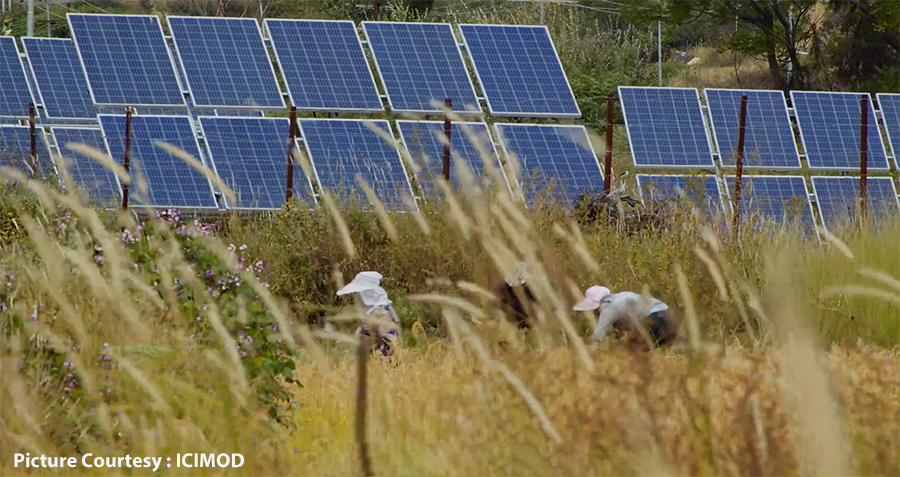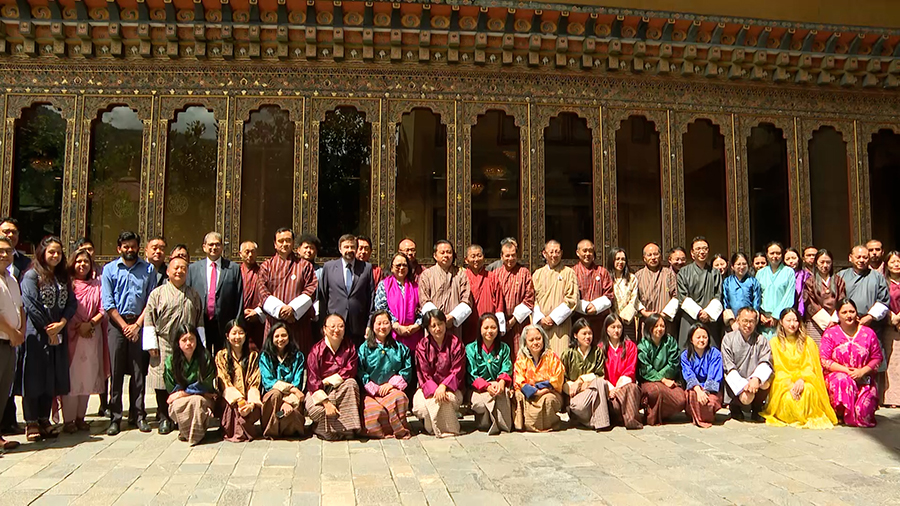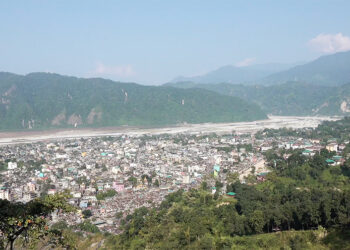 A joint analysis by ICIMOD and the Department of Energy reveals that using renewable energy-powered lift irrigation could potentially irrigate 62,000 acres of farmland in the country. This method uses sustainable sources like solar or wind power to operate pumps for irrigation. Currently, only 20 per cent of the country’s cultivable land is irrigated. A significant portion of the farmland remains underutilised due to various challenges.
A joint analysis by ICIMOD and the Department of Energy reveals that using renewable energy-powered lift irrigation could potentially irrigate 62,000 acres of farmland in the country. This method uses sustainable sources like solar or wind power to operate pumps for irrigation. Currently, only 20 per cent of the country’s cultivable land is irrigated. A significant portion of the farmland remains underutilised due to various challenges.
 A high-level dialogue on accelerating the future of agriculture, held in the capital, brought together government officials, experts, and development partners to discuss challenges faced in advancing renewable energy irrigation systems in the country and explore strategies to overcome them.
A high-level dialogue on accelerating the future of agriculture, held in the capital, brought together government officials, experts, and development partners to discuss challenges faced in advancing renewable energy irrigation systems in the country and explore strategies to overcome them.
According to the International Centre for Integrated Mountain Development (ICIMOD) and the Department of Energy, with less water available, many farmers use diesel pumps, adding to carbon emissions.
They said that renewable energy-based solutions could potentially avoid up to 68,000 metric tonnes of carbon dioxide emissions every year.
Furthermore, the intervention could also generate over 14,700 jobs across the agriculture and energy sectors.
However, the event highlighted challenges such as policy and regulation gaps, no set standards, lack of technical expertise and limited funding sources, among others in adopting renewable energy-powered lift irrigation.
“In Bhutan, the system is still in its early stages. To promote it effectively, we need to first create a conducive environment. Currently, there is no clear policy or specific targets for renewable energy irrigation. Therefore, we need proper policies, regulations, targets, programmes, and plans in place,” said Avishek Malla, Energy Intervention Manager, ICIMOD.
Experts called for strategic investment and better coordination across government agencies. To support renewable energy-powered lift irrigation, ICIMOD and the Department of Energy launched two key reports. The reports outline challenges and provide a framework and recommendations.
They also introduced the Productive Use of Renewable Energy or PURE platform. It uses satellite images and models to show energy needs and cost estimates for irrigation.
“In the PURE platform, we can find pre-feasibility reports for the entire country, such as where water shortages exist, where irrigation is needed, and whether renewable energy-powered systems are viable,” said Karma Penjor Dorji, Director General, Department of Energy, MoENR.
He added that these serve as key baselines for informed decision-making and for mobilising the necessary support to advance renewable energy-powered lift irrigation in the country.
Stakeholders said the outcomes of this dialogue will help shape national strategies for climate-smart agriculture and ensure sustainable energy for all farmers in the country.
Sangay Chozom
Edited by Sonam Pem










